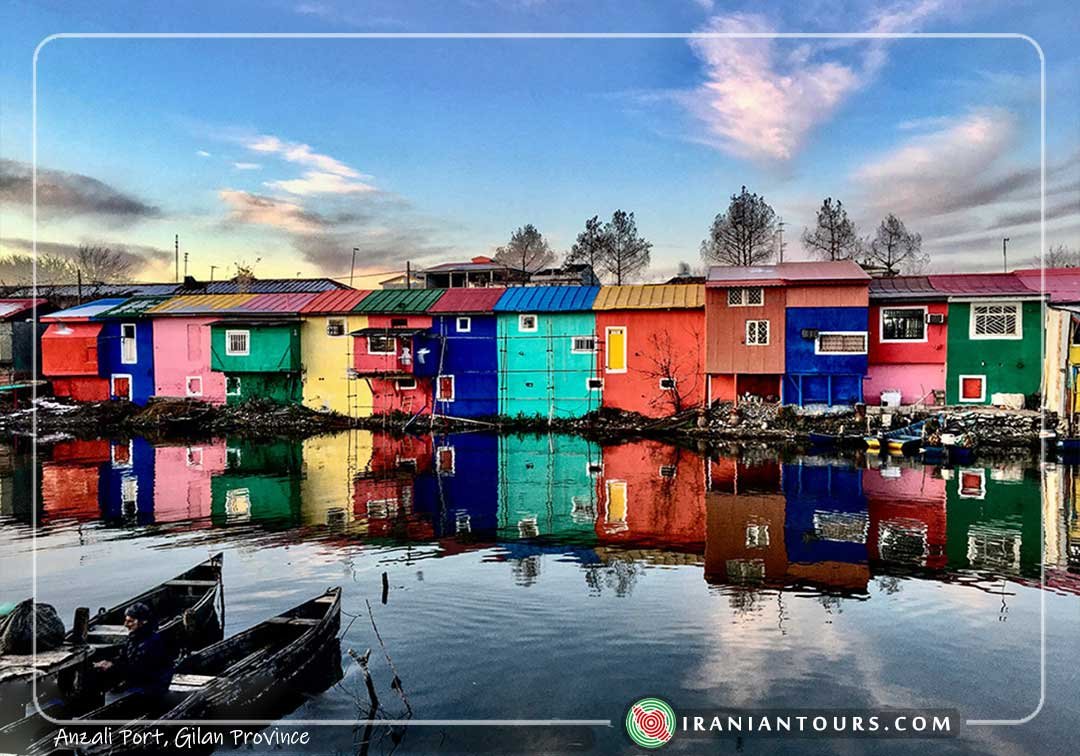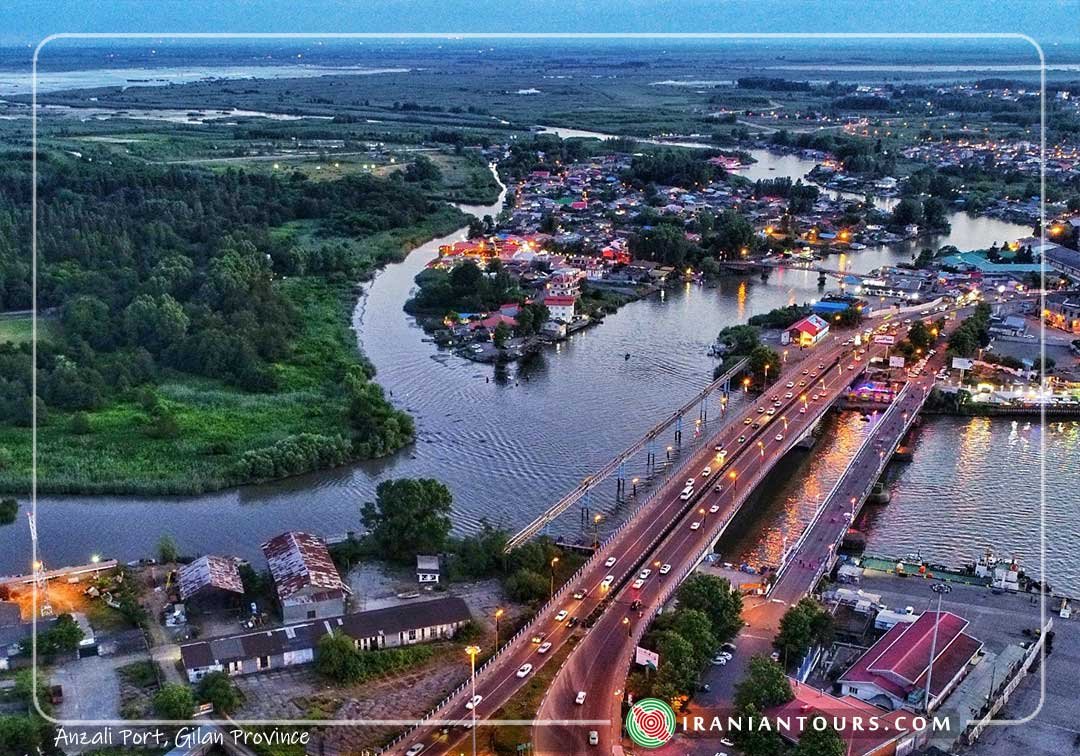Anzali Lagoon & Port
Being a coastal wetland, Anzali Lagoon is located in Gilan province on the Caspian coast. This wetland is connected to the Caspian Sea by a ship channel (which is supported by two breakwaters). It should be said that the drainage basins of Anzali Lagoon cover three hundred and seventy-four thousand hectares.
Anzali Lagoon was registered as an international wetland and it has been considered an important bird habitat by international societies.
Some think that the word Anzali is derived from Hamzali which means abrasion and scrubbing between water and land. Interestingly, there are two words in Greek, Anzalus, and Anzalia which were synonyms for the march. This is not just a hypothesis because Anzali Lagoon dates back to fifteen thousand years ago.
Anzali Lagoon has four sections: east, west (Abkenar), center (Selkeh), and Siah Keshim (which is the name of a bird species, Black-necked grebe). being a natural wetland with freshwater, Anzali Lagoon is irrigated by eleven rivers and thirty tributaries. in the west of this wetland, the maximum depth reaches over two meters.
Because of the form of its ecosystem and the shape of its bed, this wetland has a unique ecological structure. Nelumbo Nucifera, also known as Indian lotus or sacred lotus, is the most famous plant in Anzali Lagoon and it has a worldwide reputation. It should be said that aquatic plants are categorized into these groups: emergent, floating-leaved, submerged, free-floating.
Although the lagoon suffers from pollution, it is known as a good place for bird watching. The lagoon’s water ranges from fresh near the tributary streams to brackish near the mouth into the harbor and the sea. Due to the high biodiversity in this lagoon, it has become a known destination for ornithology. Heron, the Anatidae, large white-headed gulls, great crested grebe, and black-necked grebe are among the birds found in this lagoon.
Anzali Lagoon is a destination for a lot of birds that come here from the northern countries. Because of this reason the ornithology activities have been augmented. on account of a station in Selke Wildlife Refuge, all the people can benefit from ornithology. Boating and fishing are the other touristic activities in this district.





